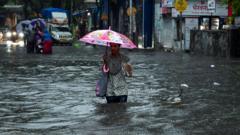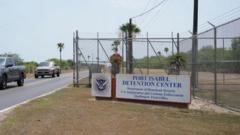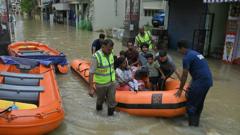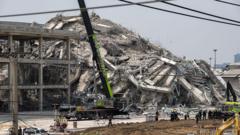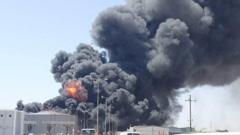Investigations reveal troubling insights into building materials and oversight.
# Tragedy Strikes Bangkok: Earthquake Topples High-Rise Amidst Controversy

# Tragedy Strikes Bangkok: Earthquake Topples High-Rise Amidst Controversy
The collapse of a high-rise in Bangkok raises questions about construction practices and safety standards after a devastating earthquake impacted the region.
With the recent earthquake's impact still unfolding in Myanmar and Thailand, Bangkok witnessed the unexpected collapse of a single high-rise building—the only one to suffer such a fate during the tremors. As recovery operations commence, the death toll has reached 15, with several still unaccounted for. The cause of this structural failure may take considerable time to uncover.
Initial findings, combined with testimonies from construction workers, suggest serious concerns regarding the building's design and materials. The China Railway 10th Engineering Group, a state-owned enterprise from China that led the construction, is under scrutiny. Florida officials reported attempted removal of crucial documents from the site following the disaster, exacerbating the situation.
Sources within the project indicate that decisions made to cut costs included underpaying contractors who then opted for inferior materials, contributing to the building's unsound structure. Notably, narrower columns than standard were employed, while recent tests on metal debris discovered subpar steel bars originating from a Thai factory owned by Chinese interests—previously shut down due to safety violations.
As investigations progress, it remains imperative to address the implications of construction safety and regulatory enforcement in the face of such tragedies in the region.
Initial findings, combined with testimonies from construction workers, suggest serious concerns regarding the building's design and materials. The China Railway 10th Engineering Group, a state-owned enterprise from China that led the construction, is under scrutiny. Florida officials reported attempted removal of crucial documents from the site following the disaster, exacerbating the situation.
Sources within the project indicate that decisions made to cut costs included underpaying contractors who then opted for inferior materials, contributing to the building's unsound structure. Notably, narrower columns than standard were employed, while recent tests on metal debris discovered subpar steel bars originating from a Thai factory owned by Chinese interests—previously shut down due to safety violations.
As investigations progress, it remains imperative to address the implications of construction safety and regulatory enforcement in the face of such tragedies in the region.










